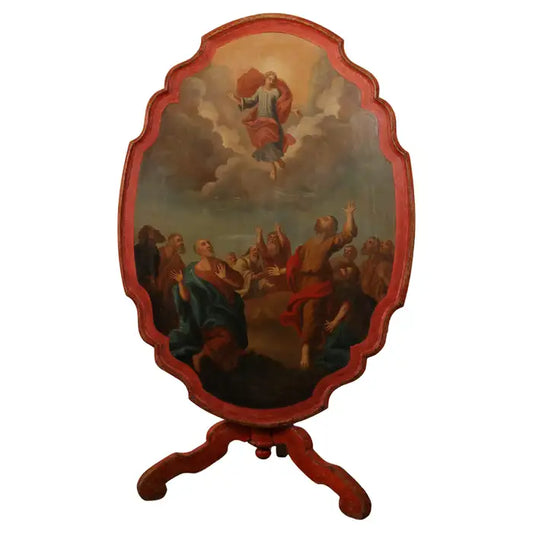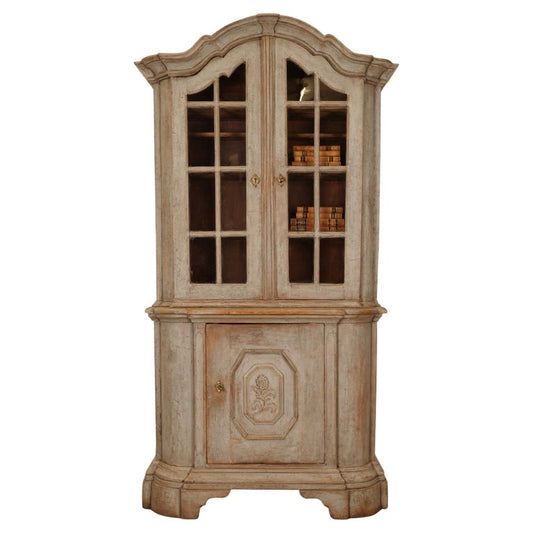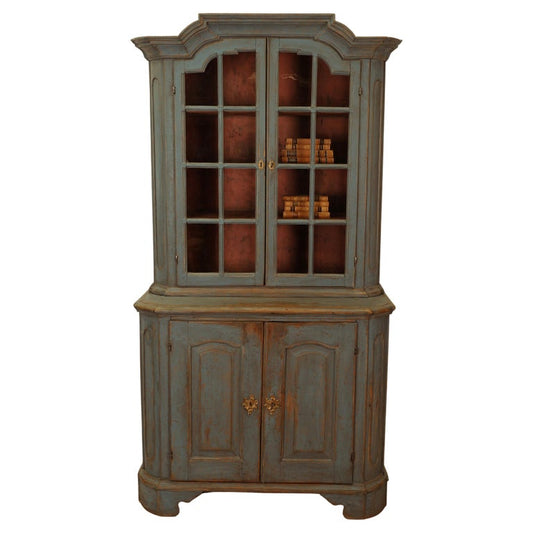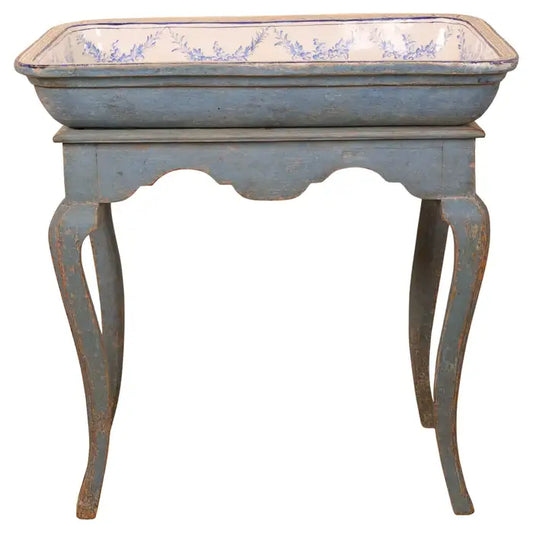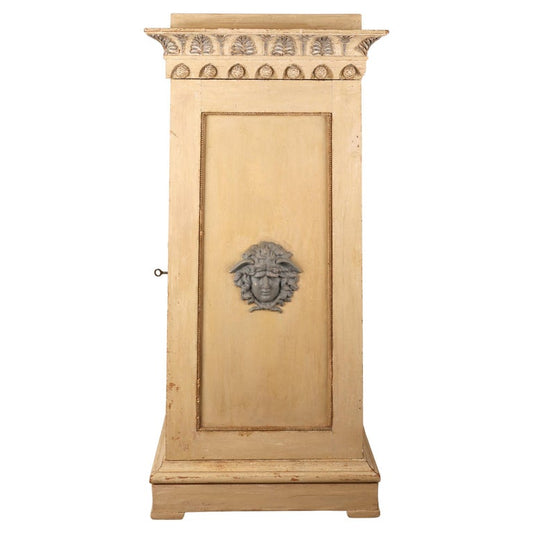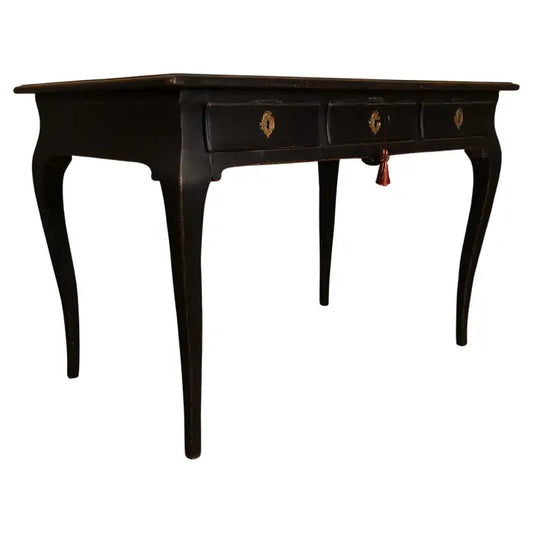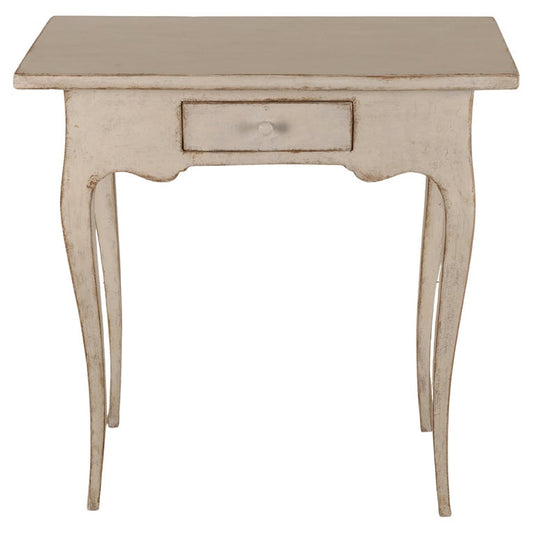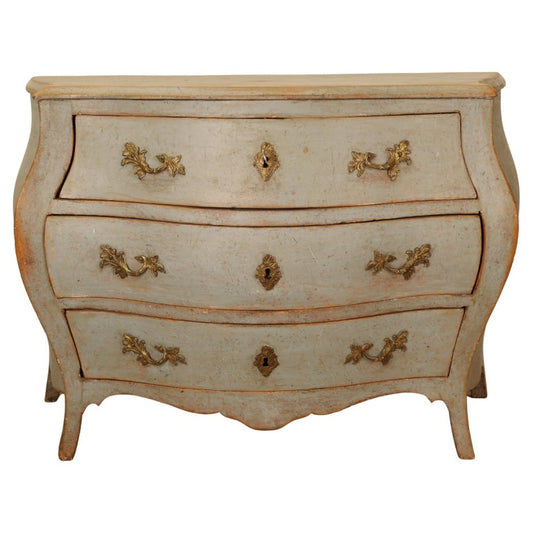Painted Swedish Furniture
Painted Swedish Furniture
Painted antique furniture occupies a distinct place in the history of European interiors. From the restrained geometry of Swedish Gustavian design to the curved lines of French Rococo, painted surfaces were used not only for visual effect but to refine proportion, enhance light, and delineate architectural form.
This page offers an overview of key styles, techniques, and design contexts associated with painted antique furniture - focusing primarily on pieces produced in the 18th and early 19th centuries across Sweden.
Defining Characteristics
Painted antique furniture is typically characterized by:
- Dry, matte surfaces in pale, neutral, or earthy tones
- Visible brushwork or tonal variation, especially on larger panels
- Use of paint to articulate structure, such as fluted legs, molded frames, and classical motifs
- Natural wear patterns that soften edges and reveal the underlying form
While finishes vary widely, common palettes include soft greys, whites, ochres, sage greens, and faded blues—especially in Northern European examples.
Key Styles
Gustavian
Originating in late 18th-century Sweden and influenced by French Neoclassicism, Gustavian furniture is known for its clean silhouettes and pale painted finishes. Painted surfaces were used to reflect light in low-sunlight Nordic interiors and to create a visual stillness suited to austere elegance.
Common Gustavian forms include:
- Gustavian sideboards and consoles with fluted legs
- Slat-back chairs with linen upholstery
- Cabinetry with understated carved detail
Rococo
Rococo furniture often features more curvilinear forms—bombé chests, cabriole legs, and asymmetrical ornament. Painted Rococo pieces may incorporate floral or pastel motifs and are sometimes highlighted with partial gilding.
Notable features:
- Serpentine drawer fronts
- Painted drawer panels with soft contouring
- Use of pastel tones such as rose, celadon, or ivory
Baroque
Baroque furniture, dominant in the late 17th to early 18th century, is known for its dramatic proportions and sculptural massing. Painted Baroque pieces often feature rich, bold colors applied to heavy oak or walnut frames, sometimes combined with gilded or carved ornamentation.
You’ll find:
- Chests and antique chairs with deeply profiled legs
- Antique furniture with architectural details such as scrolls, volutes, and columnar forms
- Paint finishes that emphasize volume and depth rather than delicacy
Context and Use
Painted swedish furniture fits seamlessly into a range of interiors:
- Modern classic spaces where patina adds depth to clean architecture
- Country homes where tonal harmony and tactile surface are essential
- Historic renovations requiring stylistic continuity with the original period
Unlike polished or high-gloss furniture, painted antiques introduce texture, atmosphere, and a muted sense of age that enhances both traditional and contemporary spaces.
Care and Maintenance
Painted antique furniture should be handled with care to preserve its finish:
- Avoid harsh cleaners or moisture
- Use soft cloths for dusting
- Keep out of direct sunlight to prevent surface fading
Professional conservation may be considered for significant pieces but should be minimal and reversible whenever possible.
Explore Painted Antique Furniture
Napoleon Antique & Art offers a curated selection of painted antique furniture, including Gustavian chairs, Rococo commodes, Empire chests, and Scandinavian cabinets. Each piece is reviewed for quality of construction, surface character, and architectural proportion.
Browse the Painted Antique Furniture Collection
Or return to the full Antique Furniture selection.

